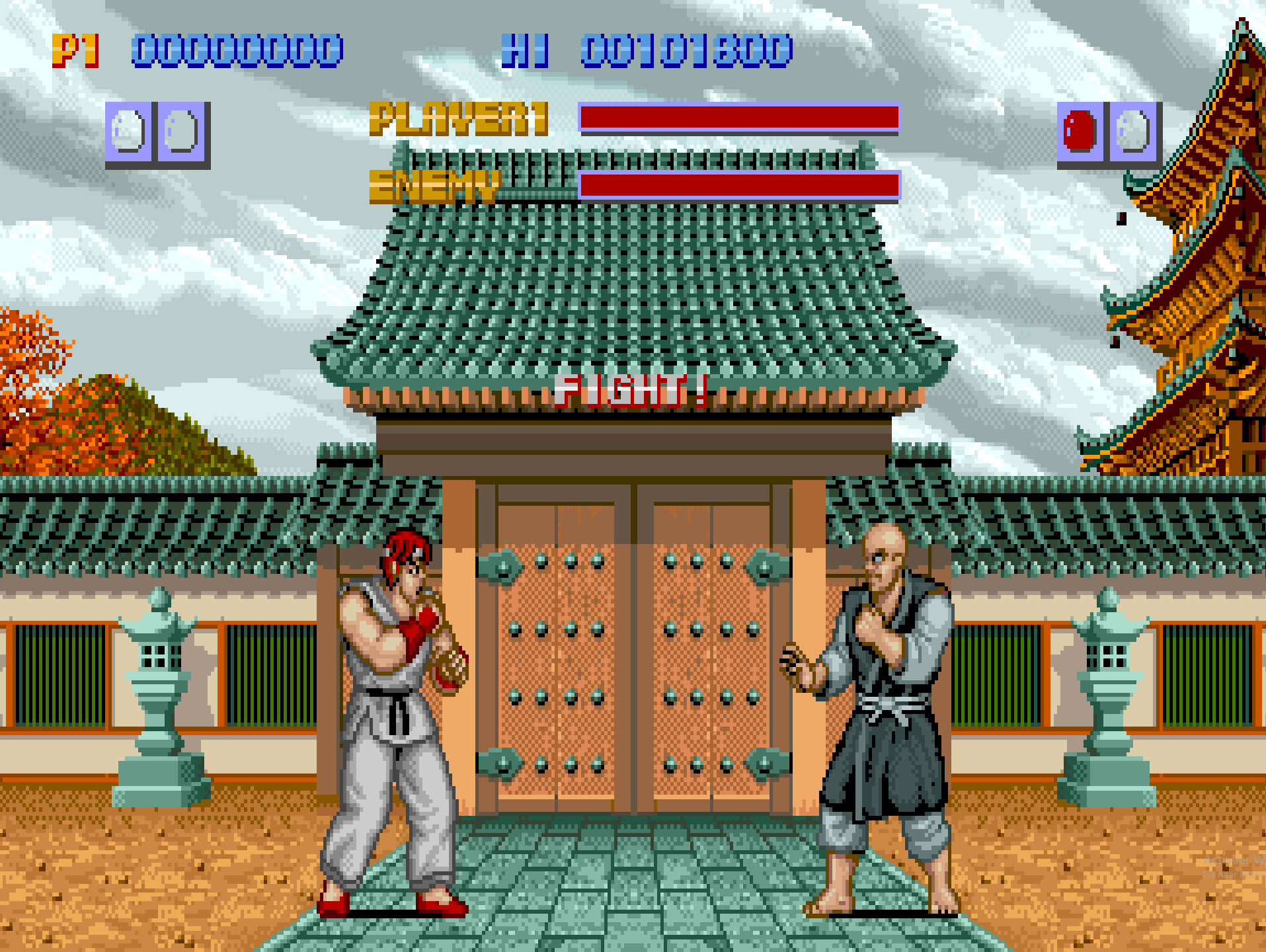Introduction
Released in 1987, Street Fighter was Capcom’s first entry into the fighting game genre, laying the groundwork for one of the most influential franchises in gaming history. While primitive compared to its sequels, the original game introduced key mechanics and characters that would become iconic in later title

Development and History
- Developer: Capcom
- Publisher: Capcom
- Release Date: August 1987
- Hardware: Capcom CPS-1 precursor (custom hardware)
Street Fighter was designed by Takashi Nishiyama and Hiroshi Matsumoto. Nishiyama would later go on to create Fatal Fury and help shape SNK’s fighting legacy. The game was conceived as a martial arts challenge where players would travel the world fighting a variety of international opponents — a concept that would become central to the series.
The arcade release came in two versions:
- A standard 6-button cabinet (light, medium, hard punch/kick)
- A pressure-sensitive pad version where attack strength depended on how hard players hit the pads — the latter was eventually phased out due to durability issues.

Gameplay Video
Gameplay and Mechanics
Players control Ryu, a stoic Japanese martial artist, and a second player can join as Ken, Ryu’s American rival. The goal is to defeat ten international fighters across five countries, including the likes of Geki, Joe, and Sagat.
Key gameplay elements:
- Best-of-three rounds per match
- Three special moves: Hadouken (fireball), Shoryuken (dragon punch), Tatsumaki Senpukyaku (hurricane kick)
- Special moves require precise joystick and button input — a groundbreaking mechanic in 1987
- CPU-controlled tournament structure, culminating in a boss battle with Sagat
The game featured large sprites and digitized voice samples, which were technically impressive for the time.

Cultural Impact and Legacy
Though not a massive hit compared to its sequel, Street Fighter was foundational:
- Introduced Ryu, Ken, and Sagat, who became core figures in future entries
- Established the genre’s special move input system (quarter-circle and charge motions)
- Influenced early SNK fighters through Nishiyama’s later work
- Became a cult classic, often revisited in collections like Capcom Classics Collection
- Set the stage for Street Fighter II, which revolutionized arcades in 1991

Fun Facts
- The original pressure-sensitive arcade cabinets often broke due to players punching them too hard
- Ryu is the only playable character in single-player mode — Ken was strictly for player two
- Some voice samples were poorly translated and became fan favorites (“You must defeat Sheng Long…”)
- Sagat’s chest scar — later iconic — originated from the final fight in this game
- The Hadouken was one of the first projectiles ever in a one-on-one fighting game

Conclusion
While often overshadowed by its legendary sequel, the original Street Fighter remains a milestone in arcade history. It defined key elements of the genre and introduced characters and mechanics that would shape fighting games for decades.

